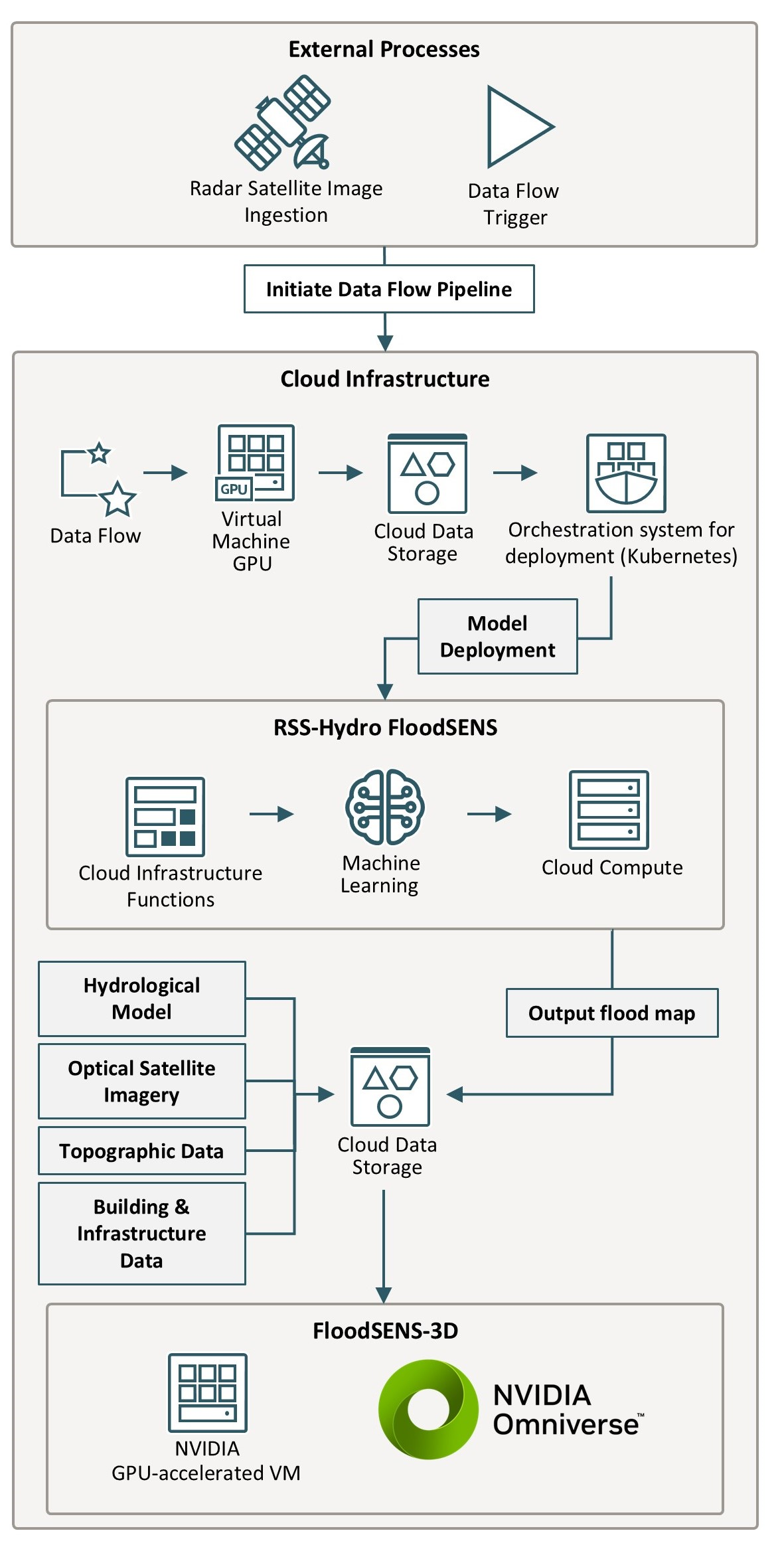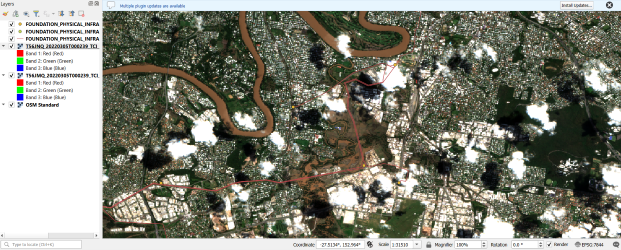As climate change intensifies the frequency and severity of extreme weather events, energy companies face unprecedented challenges in safeguarding their infrastructure. Flooding, in particular, poses significant risks to grid stability and reliability. A collaborative effort among NVIDIA, Oracle Cloud Infrastructure (OCI), and RSS-Hydro aims to mitigate these risks by using advanced AI-driven flood modeling and 3D visualization. These tools enable energy providers to effectively assess and mitigate flood-related risks to their infrastructure.
AI-Powered Flood Modeling with FloodSENS
At the heart of this initiative is RSS-Hydro’s FloodSENS solution, an AI-powered flood mapping tool that leverages machine learning to analyze satellite and other geospatial big data. By using U-Net models trained on satellite imagery, FloodSENS can generate highly accurate flood maps, even under challenging conditions such as cloud cover. The integration of auxiliary datasets, including digital elevation models and water flow grids, enhances the model’s precision. This capability is crucial for energy companies aiming to identify vulnerabilities in their infrastructure and implement proactive measures to mitigate potential flood impacts.
High-Performance Computing with OCI and NVIDIA Accelerated Computing Platform
RSS-Hydro meets the computational and graphics rendering demands of FloodSENS by deploying the NVIDIA accelerated computing platform on OCI. OCI offers bare metal and virtual machine instances accelerated by NVIDIA GPUs, such as the NVIDIA L40S GPU, optimized for both AI and graphics workloads. This infrastructure enables the training and inference of FloodSENS and enables seamless visualization of real-time flood simulations with NVIDIA Omniverse, which provides energy companies with timely insights into potential flood scenarios and their impact on grid infrastructure. The scalability of OCI, combined with NVIDIA GPUs and NVIDIA Omniverse, enables that FloodSENS can handle the extensive simulations required for comprehensive risk assessments. OCI also provides customers with a broad set of deployment options for AI and machine learning applications to maintain control over data and enables adherence with local laws and regulations, as well as prevent sensitive information from being transferred to jurisdictions with potentially weaker privacy protections.

3D Visualization with NVIDIA Omniverse
Understanding complex flood data is made more intuitive through 3D visualization using NVIDIA Omniverse. By integrating FloodSENS outputs with high-resolution aerial imagery and GIS infrastructure data, energy companies can create immersive visualizations of flood impacts on their assets. For example, simulations that focus on energy supply infrastructure at risk from extreme events in specific locations allow stakeholders to visualize potential flood effects on substations, transformers, and transmission lines. These visualizations facilitate efficient decision-making by enabling rapid identification of at-risk components and the development of targeted mitigation strategies.
The following figure shows a sample 3D scene generation of a FloodSENS simulation within the NVIDIA Omniverse platform. Significant flooding in the urban areas of Brisbane is shown, with flooded above-ground electricity lines depicted in the lower-left area of the image.

The following animated 3D-visualization shows the progression of a big flood impacting an urban area and critical infrastructure.

Powering FloodSENS with NVIDIA, OCI
To maintain the precision of the local model predictions in FloodSENS, RSS-Hydro employs continuous retraining against a proprietary, extensive global flood event database. This dynamic approach requires the NVIDIA accelerated computing platform. The L40S, in particular, offers a 6x acceleration in training compared to on-premises workstations, allowing for rapid model updates and enhanced client service. OCI provides a cost-effective and scalable solution, crucial for companies like RSS-Hydro that require agility. Another practical example is the use of L40S GPUs on OCI for inference and graphics simulating sea-level rise across the entire coastline of Kumamoto, Japan, showcasing the ability to handle large-scale hydrological simulations. FloodSENS standard operational parameters involve inference and hydrological simulations over spatial areas spanning tens to thousands of square kilometers.
Enhancing Decision-Making and Resilience
The synergy of FloodSENS, OCI, and NVIDIA Omniverse equips energy companies with a powerful toolset to enhance their climate resilience. By conducting detailed simulations and visualizations, companies can prioritize infrastructure upgrades, optimize maintenance schedules, and develop emergency response plans tailored to specific flood scenarios. This proactive approach not only safeguards physical assets but also helps ensure the continuity of energy supply to communities, thereby reinforcing public trust and operational reliability.
In conclusion, the collaboration among NVIDIA, OCI, and RSS-Hydro exemplifies how cutting-edge technology can be harnessed to address pressing challenges in the energy sector. By leveraging AI-driven flood modeling, high-performance computing, and advanced visualization tools, energy companies can transform their approach to infrastructure risk management in the face of a changing climate.
Learn more by checking out the following links:

